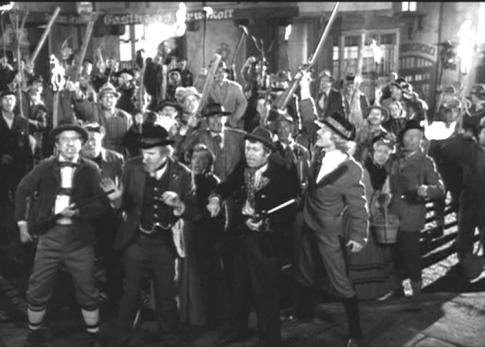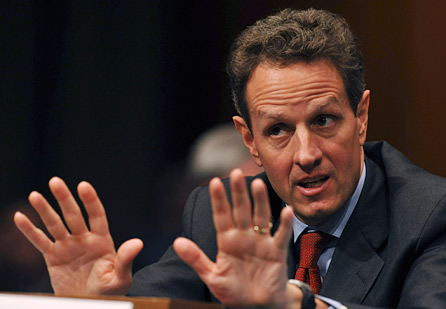This dwarfs by orders of magnitude any financial scam in the history of markets.
-Andrew Lo, MIT professor, hedge-fund oracle, and a man who understands that an academic can make the Time 100 list only if he makes outspoken, authoritative pronouncements.
Alright, what the hell is he talking about?
It surfaced about a week ago, a scandal by which we all end up paying a few basis points extra on our mortgages.
LIBOR. The London Interbank Offered Rate, whose acronym incorporates a medial letter and thus avoids being an apt homonym for “liar.” It serves as a starting point for short-term interest rates, and it changes (rarely by more than a basis point) daily.
Every morning at 11:00, the LIBOR is released by the British Bankers’ Association. Which is a consortium – a trade association, if you will – of 199 banks. If your bank is one of the largest in the world, it’s probably on the list. Which is here.
There are actually multiple LIBORs: they’re measured for each of 10 currencies (pound sterling; euro, long may it wave; American, Australian, Canadian and New Zealand dollars; yen, Swiss franc, Danish krone, Swedish krona.)
Each of those is submitted for each of 15 borrowing periods (overnight, 1 week, 2 week, and every number of months from 1 to 12.) That gives us 150 rates, the most widely quoted one being the 3-month rate for the pound sterling.
This morning that rate sat at .79%, the lowest it’s been since last February. They post it on Twitter @BBALIBOR.
How is LIBOR different than the federal funds rate that Ben Bernanke decrees? First, LIBOR is announced daily as opposed to every few weeks. Second, the federal funds rate is more or less mandated artificially. LIBOR is established via the market and then reported, rather than the other (i.e. Soviet) way around.
It’s straightforward, or ought to be. Every morning the BBA (via its vendor, Thomson Reuters) begins with the 199 rates its members charge for overnight loans and lists them in numerical order. It discards the top 50 and the bottom 50, then averages the remaining 99.
With 199 components, how can the LIBOR be subject to skullduggery? One crooked bank, or even 50, can only do so much damage, right?
Here’s the problem. From BBALIBOR.com:
Every contributor bank is asked to base their BBALIBOR submissions on the following question:
“At what rate could you borrow funds, were you to do so by asking for and then accepting inter-bank offers in a reasonable market size just prior to 11 am?”
So take back what we said earlier. The rates aren’t generated via market transactions. They’re generated via whatever’s going through the head of the bank representative who’s tasked with answering the question.
It gets worse. One paragraph later:
BBALIBOR is not necessarily based on actual transactions
Up until a few years ago, college football named its champion by saying to a bunch of coaches and sportswriters, “Forget about determining a champion on the field. Who do you think the champion should be?” BBA is doing the same thing.
Wait, here’s the funniest excerpt of all:
Each morning between 1100 and 1110 a named individual responsible for cash management at each panel bank formulates their own rates for the day and inputs them into this application, which links directly to a rate setting team at Thomson Reuters. A bank cannot see other contributor rates during the submission window – this is only possible after final publication of the BBA LIBOR data.
- (Boldface ours)
- HAHAHAHAHAHAHAHAHAHAHAHAHA
You know how you pay lower interest rates the better your credit is? And how all things being equal, you’d prefer to pay lower rates than higher ones, regardless of the strength of your credit? The same applies to big institutions, too. In 2008 Barclays – the 322-year-old British bank whose group chairman just happens to be the chairman emeritus of BBA – started submitting bogus low numbers for the daily calculation. Those numbers were still often as much as 60 basis points higher than the average from the other submitters. Barclays was admitting to being in bad shape, while being in even worse shape.
Then again, why shouldn’t Barclays have submitted fake numbers? There was no penalty for doing so, at least not in the short term, and at least not a huge one. Barclays benefitted by having people think it was rich and liquid. Lying about its numbers was the institutional equivalent of putting chrome rims on your Cadillac while living in the projects.
The then-chairman of the Federal Reserve Bank of New York knew that Barclays was being disingenuous. His emails with his counterpart at the Bank of England say as much. That regional Fed chairman chose to do nothing. A few months later, he became United States Secretary of the Treasury.
If you have an adjustable-rate mortgage…first of all, why would you subject yourself to market whims like that? Especially when fixed rates are historically low? Oh, you couldn’t get a fixed-rate mortgage? Then maybe you shouldn’t be buying a house.
Or financing college. Student loans are often tied to LIBOR, too. You pay a going rate, plus whatever today’s LIBOR is. Plus a few basis points artificially tacked on by Barclays and its co-conspirators. Across the globe, that’s tens of billions of dollars extra.
But justice has prevailed. Barclays paid a $450 million fine. Or about 3 days’ worth of its revenue.
As with the provision of health care, the fewer intermediaries there are, the better. Some lenders set rates without respect to LIBOR. Those banks’ managers know enough about their own lending practices – what to charge, who’s going to default, how big their overhead is – to name their own prices without relying on an august body an ocean away. Do business with one of those lenders, and you’re exposing yourself to less risk. And saving money.




